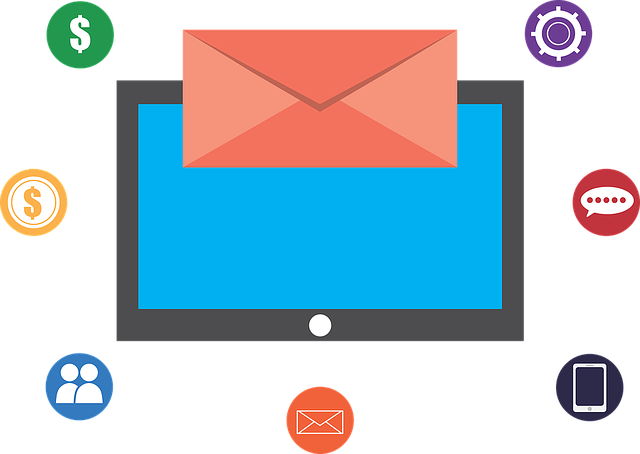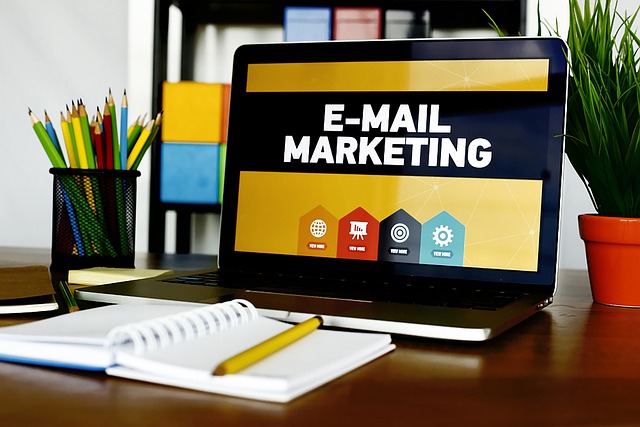Are you struggling to boost sales and engage with your customers in the competitive world of e-commerce? Look no further than email campaign management. With the right strategies in place, you can effectively drive sales and create meaningful connections with your customers.
Email campaigns have proven to be one of the most powerful marketing tools for e-commerce businesses, with a potential return on investment (ROI) of up to 4400%. By implementing a well-planned and targeted email campaign, you can capture your audience’s attention, nurture leads, and ultimately increase conversions and customer loyalty.
In this article, we will guide you through the essential steps of email campaign management for e-commerce success. From defining your campaign goals and building a targeted email list, to creating engaging content and analyzing campaign performance, we will provide you with practical tips and data-driven insights.
Get ready to take your e-commerce business to new heights with effective email campaign management.
Key Takeaways
- Understanding the target audience and segmenting them based on demographics, browsing behavior, and purchase history is crucial for creating personalized email campaigns.
- Tracking key metrics such as open rates, click-through rates, and conversion rates allows for measuring the success of email campaigns.
- Building a targeted email list is essential for increasing revenue and customer loyalty in e-commerce.
- Continuous optimization and improvement of campaigns through tactics like A/B testing and staying up-to-date on best practices are necessary for boosting sales and customer engagement.
Define Your Campaign Goals and Objectives
Get ready to witness the power of your e-commerce dreams coming true as you define your campaign goals and objectives, paving the way for unprecedented sales and customer engagement.
To start, it’s crucial to identify your target audience accurately. Understanding who your customers are will allow you to tailor your email campaigns specifically to their needs and preferences. By segmenting your audience based on demographics, browsing behavior, and purchase history, you can send personalized messages that resonate with each individual.
Additionally, it’s vital to measure the success of your campaigns. Track open rates, click-through rates, and conversion rates to gain insights into what works and what doesn’t. Analyzing this data will help you optimize your email marketing strategy for maximum effectiveness.
Now, let’s explore the next step of building a targeted email list.
Build a Targeted Email List
Transform your business by creating an exclusive list of potential buyers who are guaranteed to skyrocket your revenue and bring in a stampede of loyal customers.
To achieve this, email segmentation is crucial. Segmenting your email list allows you to target specific groups of customers based on their preferences, demographics, and behavior. This personalized approach ensures that your email campaigns are relevant and engaging, leading to higher open rates and click-through rates.
Another important aspect to consider is email deliverability. It’s essential to maintain a good sender reputation to ensure that your emails reach the inbox and not the spam folder. To improve deliverability, focus on building a clean email list, regularly remove inactive subscribers, and monitor your email metrics.
By following these practices, you can enhance the effectiveness of your email campaigns and maximize your chances of success.
Now, let’s move on to the next section about creating engaging and personalized content that will captivate your audience and drive conversions.
Create Engaging and Personalized Content
Crafting compelling and tailored content is a pivotal strategy to captivate your target audience and drive conversions for your business. By creating personalized recommendations and interactive content, you can significantly enhance customer engagement and boost sales. Personalized recommendations allow you to provide customers with product suggestions based on their browsing and purchase history, increasing the likelihood of a purchase. Interactive content, such as quizzes or surveys, not only entertains your audience but also provides valuable insights about their preferences and interests.
To truly engage your audience, consider using a mix of different content formats in your emails. Incorporate a 3 column and 3 row table in markdown format to showcase featured products, highlight limited-time offers, and share customer testimonials. This visually appealing format captures attention and entices readers to explore further.
In the next section about ‘use effective email design and formatting,’ we will discuss how to optimize the visual elements of your emails to maximize their impact.
Use Effective Email Design and Formatting
Maximize the impact of your emails with visually appealing design and formatting that captivates your audience and leaves a lasting impression. When it comes to email design tips, there are several formatting best practices that can help you create engaging and eye-catching campaigns.
First, focus on creating a clean and organized layout. Use a single-column design to ensure your content is easily readable on different devices.
Second, make sure to use compelling visuals such as high-quality images and relevant graphics to grab your audience’s attention.
Finally, don’t forget to include a clear call-to-action (CTA) button that stands out and entices recipients to take action.
By following these email design and formatting best practices, you can enhance the overall look and feel of your campaigns, making them more visually appealing and engaging for your audience.
So, once you have your emails designed, it’s time to track and analyze campaign performance to further optimize your strategies and boost your e-commerce sales.
Track and Analyze Campaign Performance
To truly understand the impact of your email strategies, it’s essential to track and analyze the performance of your campaigns. By monitoring campaign metrics and conversion tracking, you can gain valuable insights into what is working and what needs improvement. A great way to visualize this data is by using a table:
| Metric | Description |
|---|---|
| Open Rate | The percentage of recipients who open your emails |
| Click-through Rate | The percentage of recipients who click on a link |
| Conversion Rate | The percentage of recipients who make a purchase |
By tracking these metrics, you can identify trends and patterns in your email campaigns. For example, if you notice a low open rate, you may need to improve your subject lines or sender name to increase engagement. Similarly, a low conversion rate may indicate that your call-to-action needs to be more compelling. By continuously optimizing and improving your campaigns based on these insights, you can boost sales and customer engagement.
Continuously Optimize and Improve Your Campaigns
In order to continuously improve your email strategies, it’s crucial to keep an eye on campaign performance and make necessary adjustments based on the insights gained. Here are four key tactics to optimize and improve your email campaigns:
-
Implement A/B testing strategies: Test different variations of your emails to identify what resonates best with your audience. This can include testing subject lines, content layout, call-to-action buttons, and more. Analyze the results to determine the most effective elements and refine your campaigns accordingly.
-
Utilize email segmentation techniques: Divide your subscriber list into smaller segments based on demographics, purchase history, or engagement level. By sending targeted emails to specific segments, you can personalize the content and increase relevancy, leading to higher open rates, click-through rates, and conversions.
-
Monitor key metrics: Continuously track important metrics like open rates, click-through rates, conversion rates, and unsubscribe rates. This data will provide valuable insights into what is working and what needs improvement, allowing you to optimize your campaigns for better results.
-
Stay up-to-date on industry best practices: Keep abreast of the latest trends and strategies in email marketing. Attend webinars, read industry blogs, and network with experts to stay informed and gain new ideas to enhance your campaigns.
By implementing these tactics, you can continuously optimize and improve your email campaigns, resulting in increased sales and customer engagement.
Frequently Asked Questions
How can I ensure that my email campaign is compliant with spam laws and regulations?
To ensure your email campaign is compliant with spam laws and regulations, focus on email campaign deliverability and optimization.
Implement double opt-in processes to obtain explicit consent from subscribers. Use a reputable email service provider that adheres to industry standards.
Maintain a clean and updated email list to minimize bounce rates.
Personalize your emails and segment your audience for better engagement.
Regularly monitor and analyze your email metrics to identify areas for improvement and maximize the effectiveness of your campaigns.
What are the best practices for segmenting my email list for better targeting?
To improve targeting in your email campaigns, you should utilize effective email list segmentation techniques. By dividing your subscribers into smaller groups based on demographics, behavior, or purchase history, you can personalize your messages and increase engagement. Research shows that personalized emails generate 6x higher transaction rates than generic ones. So, make sure to take advantage of segmentation to send relevant content to your subscribers. This will help boost open rates, click-through rates, and ultimately, sales.
How often should I send emails to my subscribers without overwhelming them?
To determine the ideal email frequency for your subscribers, consider their preferences. Sending emails too often can overwhelm them and lead to unsubscribes. However, not sending enough emails may result in missed sales opportunities.
To strike a balance, conduct surveys or analyze data to understand what frequency your subscribers prefer. Use A/B testing to experiment with different frequencies and measure the impact on open rates, click-through rates, and conversions.
Remember, finding the right email frequency is crucial for maximizing engagement and sales.
What are some effective strategies for increasing email open rates and click-through rates?
To increase email open rates and click-through rates, you need to grab your subscribers’ attention like a magnet. Craft compelling subject lines that act as a key to unlock their curiosity.
Optimize your email content by personalizing it to resonate with your audience. Use data-driven insights to segment your subscribers and send targeted emails.
Experiment with different email formats and CTAs to find what works best. Remember, increasing email engagement is crucial for optimizing your e-commerce business’s success.
How can I measure the success of my email campaign in terms of ROI and revenue generated?
To measure the success of your email campaign in terms of ROI and revenue generated, start by tracking conversions and analyzing click-through rates. These metrics will give you insights into the effectiveness of your campaign in driving sales.
Additionally, it’s important to determine the impact of your email campaigns on customer retention and loyalty. By analyzing these factors, you can assess how well your emails are engaging customers and generating revenue, ultimately helping you optimize your campaigns for better results.
Conclusion
Congratulations on completing this article on email campaign management for e-commerce! By following the steps outlined in this guide, you now have the tools to boost your sales and engage with your customers effectively.
Just like a well-oiled machine, your email campaigns can work seamlessly to drive success for your business. Remember, with the right goals, a targeted email list, engaging content, effective design, and continuous optimization, your campaigns will flourish.
So, go ahead and put these strategies into action, and watch your e-commerce business thrive!








